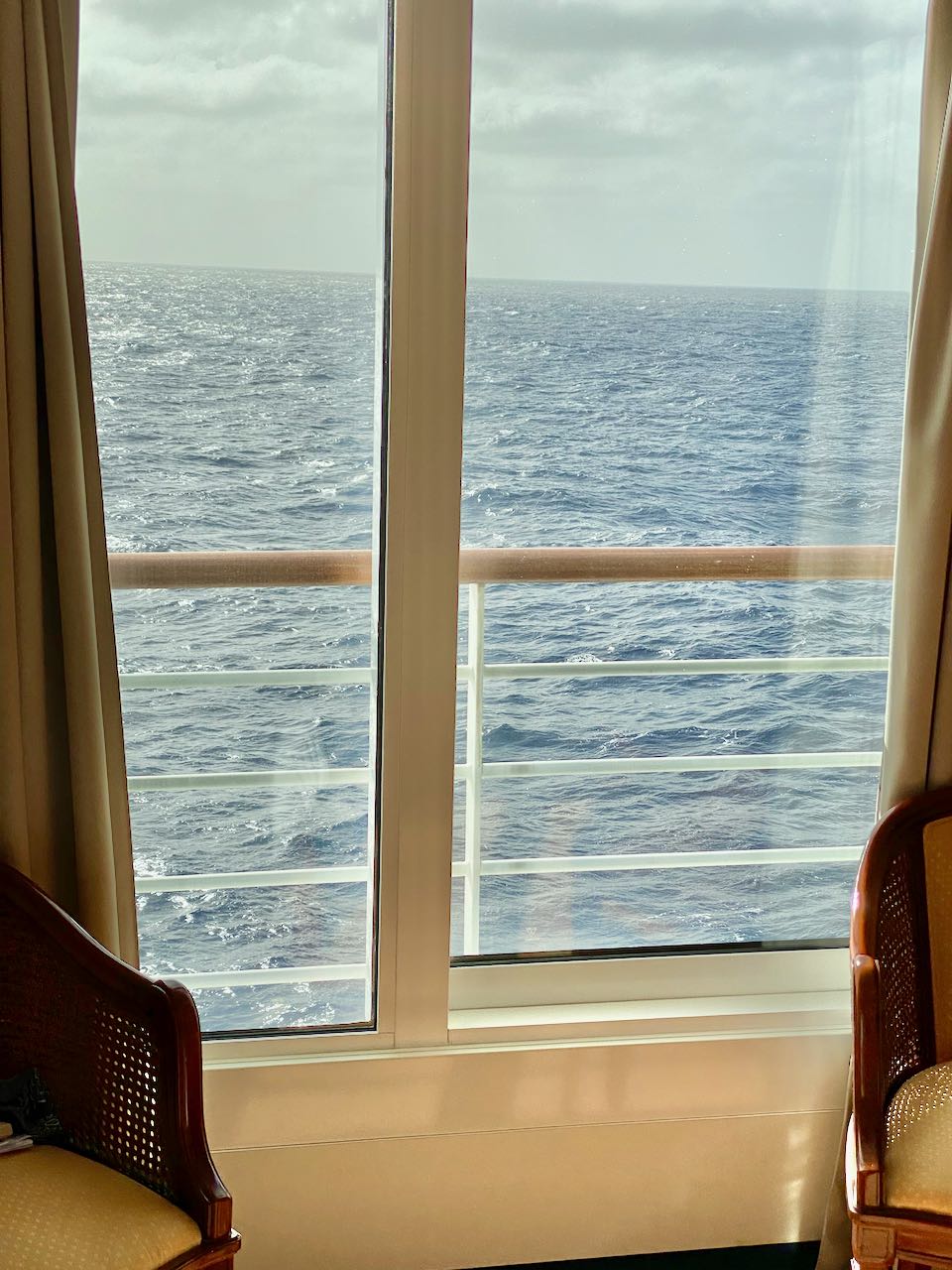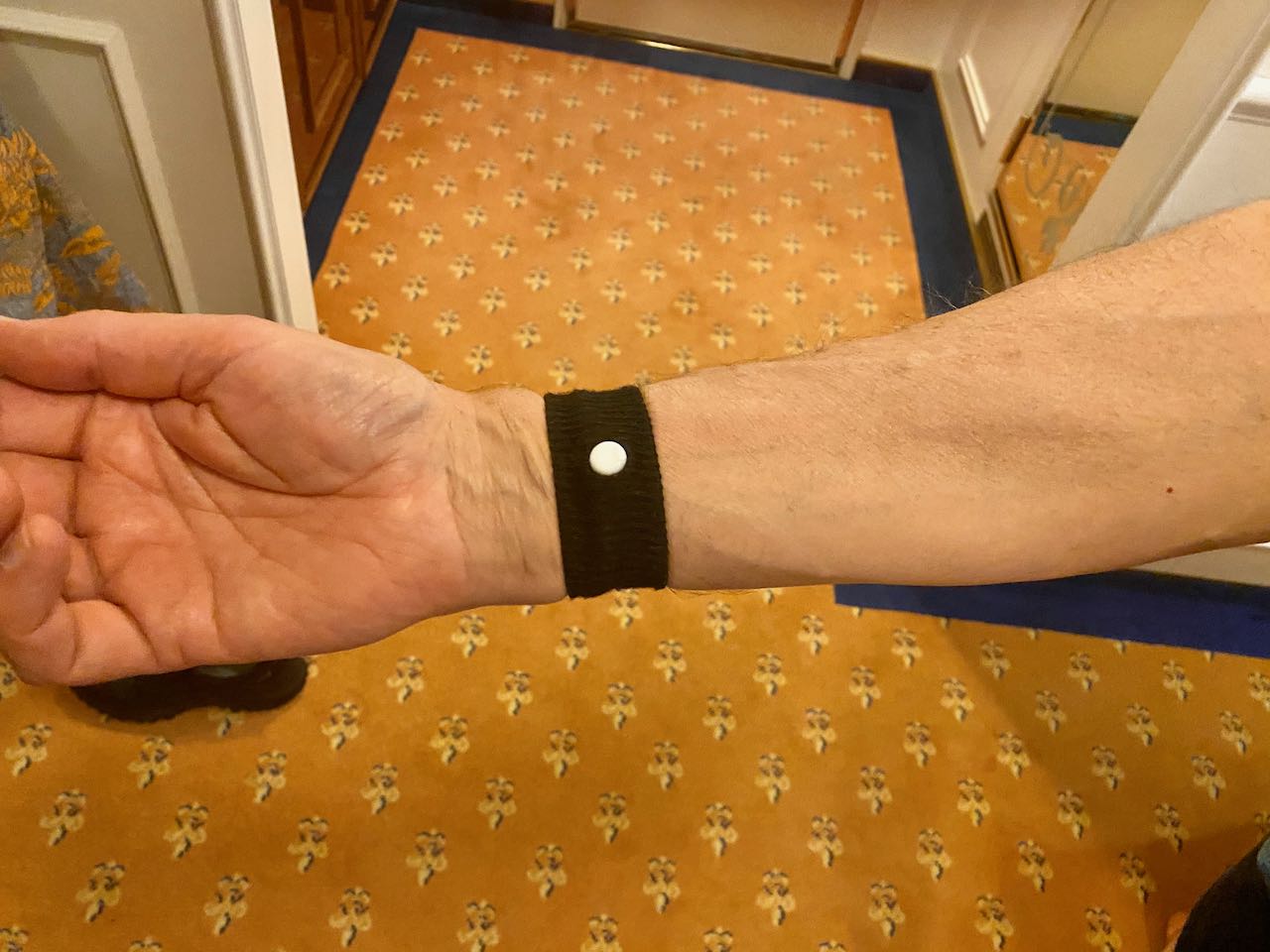1:30 PM Thu Jan 9 23 N, 143 W
We’re sailing just south of due west at 11 knots over 17,150 feet of water
Sea surface temperature is 19 C/66 F and the air temperature is 20 C/68 F
Finally getting in the swing of things here on Semester at Sea.
Students are great – asking loads of excellent questions, organizing all kinds of extracurricular activities, generally having fun while living and learning together. Everywhere we go, they are studying, reading, browsing their laptops, doing homework. A lot of people have been seasick, though this is abating with time. Jennifer and I have largely avoided this – hooray! We’ve used both the scopolamine patches and the sea-bandd.
Internet connection is flaky and extremely slow, but I can often get on for 30 minutes or so, especially at 5 AM before students start beating on it.
After a lifetime of seeking out remote places, I’ve never been in so wild a place, so totally devoid of plants, animals, and people! We’ve been sailing for five days. Haven’t seen a single other ship, nor even an airplane. No lights on the ocean at night except the waxing Moon and the lights on our ship.
We’re still almost 1000 miles out from Honolulu, traveling in a little envelope of buzzing humanity. I would believe (though I can’t back this up) that there’s not another person for hundreds of miles in any direction. It feels like the wildest wilderness I’ve ever seen, and I’m struck that nearly the whole planet is like this: vast roiling plains of heaving opaque water laid out to the unbroken horizon without the slightest hint that anyone else exists outside our ship.
We’re sailing down the Trade Winds with a following sea (as so many of you have wished for us!). The swell is bigger now – about 12 feet, and the ship rolls and creaks constantly around us. Teaching is a hoot as I move about the stage to the motion beneath. The projection screen in my classroom swings back and forth like a pendulum, and the hundreds of students in eac section sway in synchrony.
We’re still under a low ceiling of stratocumulus clouds, with only an occasional break. Our cabin is on the port side, so our window looks south. The sea is not blue, but rather very dark gray to black. It looks like seething liquid metal somehow. Chaotic wind-driven waves of all sizes break up the following swell, with little wisps of droplets stripped off the crests of the whitecaps.
The ship is 575 feet long, and we can walk from end to end in a few minutes. Yet one ship’s length below us the water is blacker than the darkest night. The ocean is more than 17,000 feet deep beneath us, so beyond that one ship’s length there are 30 more ship’s lengths of unseen depth. That crushing black abyss is cold too: about 3 C or 37 F. The deep water hasn’t touched the air for 1000 years, during the High Middle Ages. It doesn’t know we’re here yet.
Interesting observation – we’ve been sailing right through the Great Pacific Garbage Patch. There’s nothing unusual to see! Most of the trillions of particles are less than 1 cm in diameter, and they float just beneath the surface. The plastic is buoyant, so it accumulates at the surface in the middle of ocean gyres where the water converges and sinks. Most of it is tiny pieces of fishing line and nets which break down over time due to UV exposure and being pounded to crap by waves. On average, the densest parts of the patch feature about 1 tiny plastic particle per 600 square feet (the size of a small house). Looking out over the black sea surface, there’s absolutely no sign of garbage.
Jennifer has joined the “Lifelong Learners” group – about 25 older adults who are just along for the ride and the classes. She’s also taking 4 courses: Global Studies, Oceanography, Coastal Ecology, and Nonverbal Communication. I think we’re both having fun with the classes. Plus, she’s been seeing schools of flying fish skimming out of and across the water!
We’re scheduled to dock in Hawaii at 8 AM Sunday. I will lead a field class with three stops: hiking a short trail to explore volcanic rocks and the geologic history of the islands; then snorkeling on a sallow reef to learn about marine communities; then visiting with a local political leader to learn about climate mitigation and adaptation measures by the City of Honolulu. Then we re-board the ship by 5 PM and continue on to Japan.
That’s going to be a crazy busy day!














